Scleral lenses are specialty lenses that provide correction for various different corneal conditions. These specialized lenses differ from normal contact lenses in the way that they are rigid and rest on the Scleral or white part of the eye. The larger diameter of scleral lenses allows them to correct severely misshapen corneas and provide much better vision for patients who suffer from various ocular surface and corneal conditions. Read on below to find the answers to commonly asked questions about scleral lenses.

The content below was provided by Dr. Brett Bennett, Optometrist, and is medically reviewed for accuracy. Some links have been added to audio transcripts to provide access to relevant resources or information.
Table of contents:
- What are scleral lenses?
- How do scleral lenses work?
- What is the difference between scleral lenses and regular contact lenses?
- Where can you get scleral lenses?
- Do you need a prescription for scleral lenses?
- Are scleral lenses hard to put in?
- How do you put a scleral lens in?
- How long can I leave scleral lenses in?
- Are there other types of specialty lenses besides scleral?
What are scleral lenses?
Answer provided by Dr. Brett Bennett. Transcript included below.
Dr. Brett Bennett:
Scleral lenses are a specialty type of contact lens that rests on the clear tissue above the white part of the eye. So, that white part of the eye has little to no nerve innervation in it and because of that, Scleral lenses are really comfortable. A lot of people, they see this hard lens as intimidating because historically hard lenses are uncomfortable because they rest on the cornea of the eye, which is the clear avascular layer of the eye which helps us see out of the eye like a window. But these sclera lenses, they rest on the white part of the eye and they feel really comfortable and they are filled with liquid. Preservative free saline that gives us the visual quality that people desire. A lot of people that need these scleral lenses have a lot of things going on and they’re usually towards the end of their rope dealing with their eyes and they’re looking for any hope that they can get.
So a lot of the times we see people with end-stage dry eyes, nothing else can help, but since this lens is filled with liquid, it can give them the comfort and vision they desire comfortably throughout the day. On the other end of things, I’ve seen people come in that have really bad outcomes post-surgery, and their cornea is not functioning well anymore and this lens will function similar to their new cornea. I see a lot of pathology, like different shapes of corneas. Just to kind of highlight some of them…. Keratoconus, Keratoglobus and pellucid marginal degeneration. All those things can affect visual quality of life on patients and these specialty lenses or scleral lenses can give them a peace of mind, visual freedom again, and a better quality of life that they’ve been seeking.
How do scleral lenses work?
Answer provided by Dr. Brett Bennett. Transcript included below.
Dr. Brett Bennett:
They are a hard lens that is larger than the cornea, so most of them are 16 millimeters in diameter. Most corneas are around 12 so we’re completely skipping the cornea entirely. It’s filled with this liquid, that preservative free saline, and that saline rests on the eye all day lubricating it as well as, giving the vision that you need through that patient scleral lens. It rests on the white part of the eye, which is called the sclera and in turn, these are called scleral lenses.
What is the difference between scleral lenses and regular contact lenses?
Answer provided by Dr. Brett Bennett. Transcript included below.
Dr. Brett Bennett:
Most of your contact lenses that are prescribed in the United States today are a soft contact lens. And soft contact lenses are usually made of a type of silicone or plastic that is using the tears of the eye to stay lubricated as well as has its own prescription inside. But usually the contact lens that’s soft is flimsy or it’s easily moldable. This type of lens, the scleral lens, is a hard lens and it’s a rigid gas perm material and it rests on the white part of the eye instead of the cornea like soft lenses. It helps people that soft lenses cannot, and so we’re seeing an increase in the lens prescriptions today versus any other type of hard lens. So that’s the difference between a hard lens of a scleral, and a soft lens of a regular contact lens.
Where can you get scleral lenses?
Answer provided by Dr. Brett Bennett. Transcript included below.
Dr. Bennett:
Most of your scleral lenses are prescribed through an eyecare provider. You see a large number of optometrists prescribing them. There are, from my understanding, some selective areas where you can get them for acting reasons or people that are producing movies. However, most of them are giving through a prescription based trial and fit through your eyecare provider, usually being an optometrist.
Do you need a prescription for scleral lenses?
Answer provided by Dr. Brett Bennett. Transcript included below.
Dr. Brett Bennett:
Yes. So scleral lenses are very similar to fitting of glasses in a way, because there’s several things that go into fitting of a scleral lens. But for me to make it into two things, we’re going to get the fit of the lens good, consider kind of like you’re getting a pair of shoes for the first time. You want to make sure your shoes aren’t too tight or too big because that could affect how you feel throughout the day. But once we get a good fitting lens, we then have to get the power of that lens to be appropriate. And once we get those two data points established, that’s when I order the patient’s first set of scleral lenses prescribed for them. Usually, what happens is when they come in, we see the patient again, we put them on, we make sure it fits good and they see good and then we make adjustments from there. Most of the time, very few adjustments are needed because we spend a majority of that on the first visit. But to answer your question, yes, each set of scleral lenses has its own prescription inside of them.
Are scleral lenses hard to put in?
Answer provided by Dr. Brett Bennett. Transcript included below.
Dr. Brett Bennett:
I would say case by case, but average, no. I have several people over the age of 70 that are doing this efficiently within minutes. It’s similar to the first time you rode a bike. You didn’t really have it down the first couple of times, but as we train and teach you, I can wholeheartedly say that I have several people that came into it, not thinking they could do this, but left happily knowing that they could and they could see well. Initially, teaching the patient how to put it in and take it off, it takes around 10 to 15 minutes. Not a lot of time. But as they get used to it, they could do it within seconds. Just similar to riding the bike the first couple of times it’s weird, but after that, it’s easy.
How do you put a scleral lens in?
Answer provided by Dr. Brett Bennett. Transcript included below.
Dr. Brett Bennett:
That’s a great question. There’s many different techniques. Probably the most uniform idea is to use a device called plungers. There’s a large plunger and then there’s a small plunger, okay? And these plungers fit in your hand and you can manipulate them with your fingers, but the plungers allow you to easily put the lenses in and take them off. The plungers, the large one is used to put the contact in and ideally it acts like a suction cup. So it holds the lens in place while we fill it with liquid so we can then put it into our eye. And the smaller one literally is a teeny tiny thing, but it acts like a dart board. You want to go towards not necessarily the center part of your eye, but towards the edge of the lens. You press in with this small plunger and slowly lift off breaking the seal of the lens and the lens comes right out. It’s really quite easy.
How long can I leave scleral lenses in?
Answer provided by Dr. Brett Bennett. Transcript included below.
Dr. Brett Bennett:
With any of the specialty lenses, I would even make an argument with any type of soft lens even though there are some out there that are approved to sleep in, I would never sleep in them, ever. And the reason why is anytime we go into a rapid eye movement while we dream, you don’t want anything in your eye because that can lead to scarring, infection, inflammation, possibly loss of vision. So, when we first give it to patients we recommend, wear it for around four hours that first day, the next day boost it to six, the next day boost it to eight, 10, 12, and then however long you want to. But it’s okay to take naps in them. Just don’t take over four hour naps and preferably never sleep in them.
Are there other types of specialty lenses besides scleral?
Answer provided by Dr. Brett Bennett. Transcript included below.
Dr. Brett Bennett:
My answer to that is yes. Each practitioner is different. My go to is the scleral lens and when the scleral lens does not work, I go to the next lens in my arsenal of lenses, which is called a hybrid lens. A hybrid lens is a soft lens that has a hard lens embedded inside of it. Think of it like a Reese’s peanut butter cup. The chocolate part is the soft lens, which is comfortable on the eye and the peanut butter portion is the hard part. So I do that lens after the scleral because it is slightly more complicated, but when the sclerals don’t work, it does. That’s just what I’ve seen in practice and what I’ve come to know and so the hybrid lens also works well. It’s very similar to a scleral lens, we still fill it with liquid, we still have to use plungers and it works well in those same scenarios, the group of people that need relief and have those same diseases.




